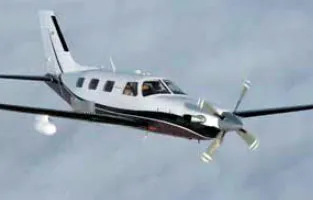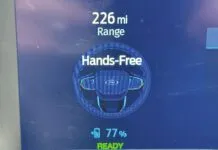Over the last few months, I’ve been working with a friend, Tom, who’s looking to expand his aeronautical horizons. His comfort zone is getting in the way of accomplishing his objective. As I considered this conclusion, I realized that it’s a fine line indeed.
“You can’t expand your comfort zone from inside it,” I keep telling him. While essentially true, that doesn’t recognize the whole situation. Expanding one’s comfort zone must be done in carefully crafted, measured steps. You wouldn’t, for example, take a pilot fresh from his or her Private checkride in a round-dial 172 to a new Citation and expect much more than total confusion and a little panic. But, going from that round dial 172 to EFIS might be a reasonable step.
My friend has been flying a modest retractable piston single for years. He’s also got years on his instrument ticket, but explains with some chagrin that he only has a few hours of actual IMC. While I’ve observed him work confidently and competently with ATC, he does so almost exclusively using Flight Following, being reluctant to file IFR, even in VMC, primarily because of lack of recent experience “in the system.”
Tom’s mission for his airplane has changed, and he now needs and wants something with a lot more capability. He’s considering a turbine single. While this isn’t too big a step, neither is it a baby step. But, consider: If you’ve been flying an Arrow (for example) at low altitudes and mostly in VMC for the last dozen years and want to upgrade to a Meridian, not only will the aircraft change, the manner and environment in which you fly will dramatically change as well. And, exploring those changes gets more and more, um, challenging (intimidating?) as one turns more and more pages on one’s calendar.
So, what’s a pilot like Tom to do? While Tom is well down the path of mastering the new airframe, I’ve suggested that he spend a significant effort polishing those instrument skills to prepare for the new environment.
We started with some time in a sim, but that’s difficult since there’s no sim nearby. So, we’ve also spent a lot of time under the hood. We quickly knocked out enough approaches and such that Tom is again instrument current. But, my suggested flights “in the system” remained outside his comfort zone—it’s that legal vs. proficient thing.
Conservatism in a pilot is a good thing. Conservative pilots almost certainly live longer than risk takers. However, highly conservative pilots also don’t always get full utility out of their training or equipment. It boils down to that same old balancing act of risk vs. reward. If you want to extract more reward from flying, you’ve got to initially do something that feels more risky, outside your comfort zone.
Expanding one’s comfort zone is tricky. First, explore the edges often enough that the edges are no longer as uncomfortable. Then you can gradually push a bit past the edge and repeat. Eventually, you’ll be comfortable where you want to be. But, pushing past your comfort zone initially is a must.
Let me add that even if you’re qualified and proficient doesn’t mean you should be relaxed about that no-autopilot ILS to mins, down the mountain valley in snow and gusty winds. No, you should be feeling at least a bit uncomfortable, alert, and ready to react—don’t confuse that kind of uneasiness with a signal that you shouldn’t be there.





